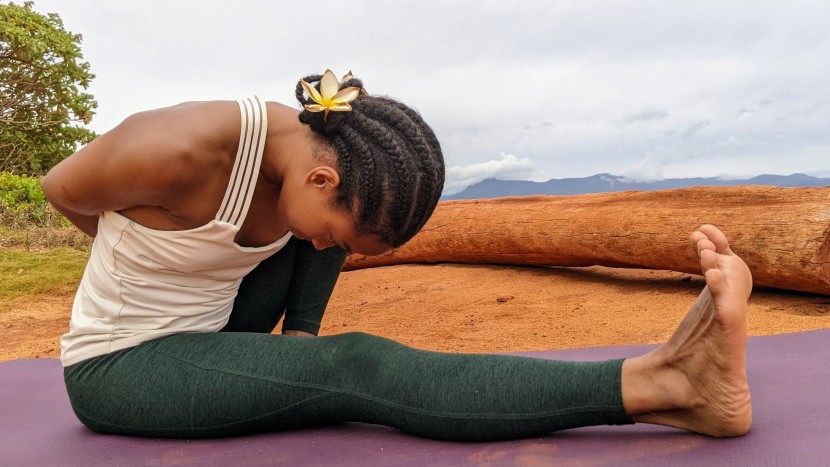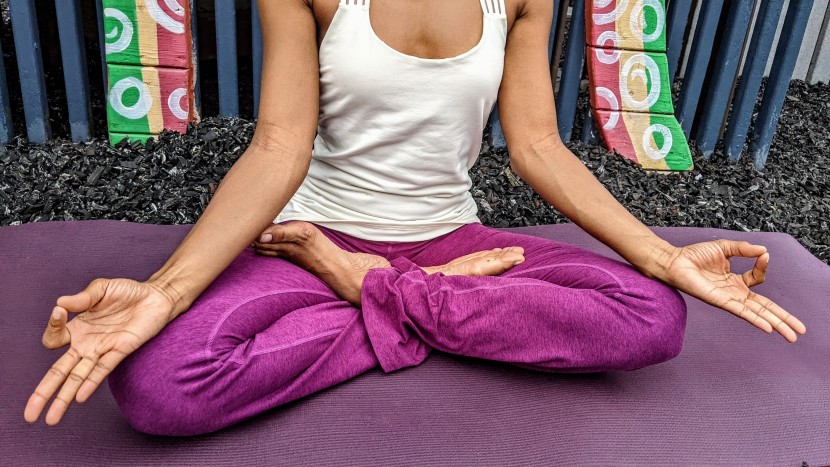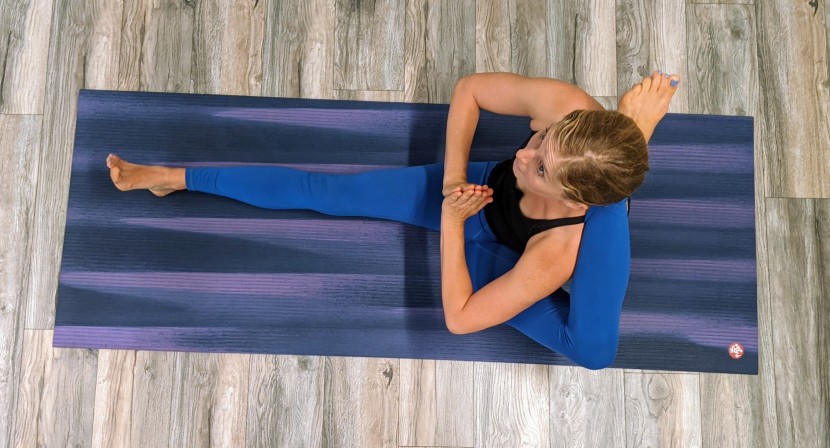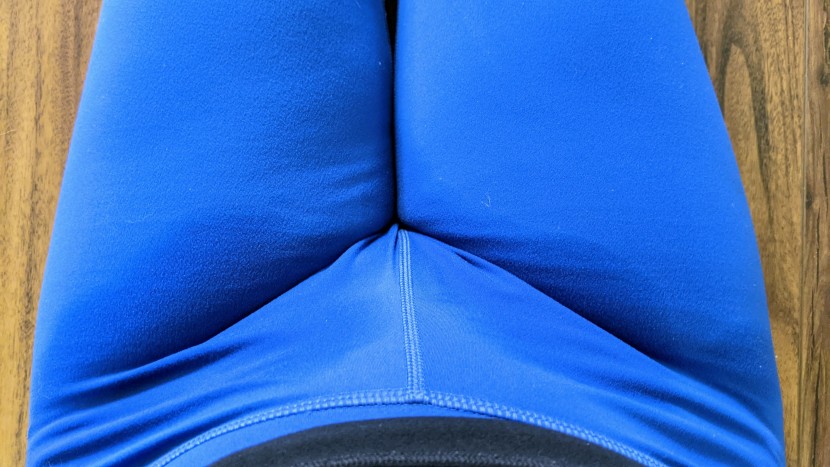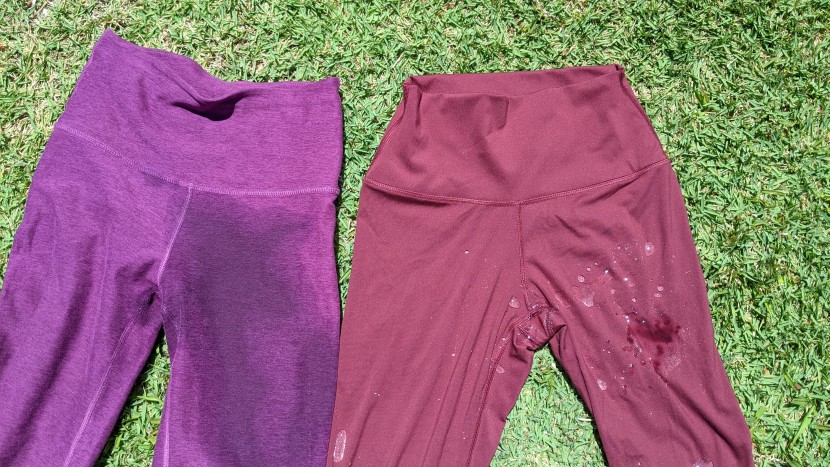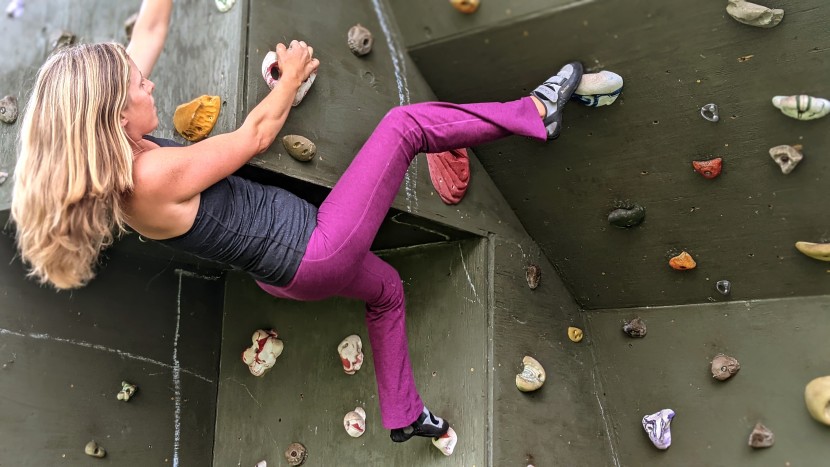Yoga offers more than fancy poses, flexibility, or fitness; the practice affords us space to cultivate being focused, calm, and centered amid the waves of change and challenge life brings us on the mat and beyond. Our testers recognize that the best yoga pants enhance our focus and training of the body and the mind. Good pants go unnoticed so that we can bring awareness to our drishti (focus point), pranayama (breath), bandhas (core center), and vinyasa (synchronicity of breath and movement).
So we based our tests on a common scenario: You are on your favorite mat and entering your flow state. Does your waistband pinch your waist or limit your breath? Do you pull up a sagging waistband after every forward fold? Are the seams chafing red highways into your inner thighs? Does the fabric snag your hips when you extend your legs? If the answer is yes, we have some better options for you. We have enough distractions without having to add uncomfortable clothing. So we tested the best and asked ourselves, “What pants do you put on in the morning and trust to stay in place, allow you to breathe, and move comfortably?”
Our testers have decades of experience as yogis and teachers. After months spent testing different styles, we know what makes a good yoga pant and have some suggestions after months of analyzing the performance of our test models. To help find the best pants for different types of yoga practice, we divided our tests into the following metrics: comfort and fit, ease of movement, breathability, and durability.
Comfort and Fit
We wore almost nothing but yoga pants for two months to experimentally test what models our bodies loved to wear. We did an initial “fit and feel” test on the first wear to assess the following aspects: fabric hand (how the fabric feels against the skin), waistband and crotch comfort, seam and feature construction, and overall contentment.
We field tested each pant's performance in various activities, including multiple styles of yoga, dance class, leisure, running errands, hiking, and climbing. Some pants were so comfortable we had to resist grabbing them daily, and others chafed so much that we struggled to put them on again. We kept a detailed record of our observations and compiled a watch-out list and recommendations for our top performers. We then compared the rankings of testers with market research to account for the experiences of different user groups and body types.
Ease of Movement
We explored how each pant feels when put to the stretch. We field tested ease of movement by observing if each pant was as flexible as a yogi — can it stretch, bend, bind, extend, and then root to rise? Aiming for pants that give you freedom of movement, we tested how well each pant performed in extreme ranges of motion. This set of standardized challenge poses explored how pants feel within Hanumanasna (splits), Eka Pada Raja Kapotasana (King Pidgeon), Eka Pada Sirsana (Leg Behind the Head), Padmasana (Lotus), and Kapotasana (Deep Backbends).
Over two months of testing, we assessed how each pant felt in dynamic movement patterns and how they held up throughout the practice. We then honed in on design features that either enhanced or impeded movement. We gave high marks to pants that feel weightless, supportive, and liberating. We dinged scores for distracting pants that had to be adjusted frequently.
Breathability
To test breathability, we wore each pair several times through the same rigorous sequence (the Ashtanga primary series) at the same studio on a grippy mat. We heated the testing room from 90 to 95°F, and we typically were in a full sweat within half an hour during this breath-paced, 90-minute sequence. We assessed how each model felt during and after class, whether our legs and core could breathe, or if the material trapped heat on our legs. We then compared how each model felt (and looked) after class, whether we were saturated through or pleasantly dry. While there are day-to-day differences in one person's exertions and sweat output, this gave us a great sense of each garment's breathability and moisture-wicking capacities in real-life applications.
We then took each legging outdoors in full sun and poured a half cup of water on the fabric to observe moisture management. Watching the pants sun-dry also allowed us to step back and compare the cosmetic appearance of the material when wet. As a final test, we wore top performers hiking 5 to 10 miles and over 1,000 feet uphill in a warm, tropical environment. We assessed how they breathed and contributed to our temperature regulation over sustained exertion.
Construction Quality
Finally, to gauge the construction quality and subsequent durability of each pair, we essentially lived in these yoga pants over many months. We wore them to class, but also around the house, running errands, on hikes and walks; you name it, we have done it. Top performers were tested both hiking through sharp lava rocks and climbing.
We tested the opacity of the pants with a squat test. With standardized lighting, we took a deep squat in each pant to see if a pair of bright red underwear showed through the fabric or if they were appropriately shielded. Finally, we ran each pant through at least five wash cycles. After this, we gauged the degree of pilling, threading, shrinkage, or shape loss after laundering. While this two-month testing period wasn't long enough to cause durability issues on any one model, running them hard through yoga practices, multiple wash cycles, and a range of daily activities gave us a good gauge of red flags for impending breakdown and the initial resiliency of the pant.

